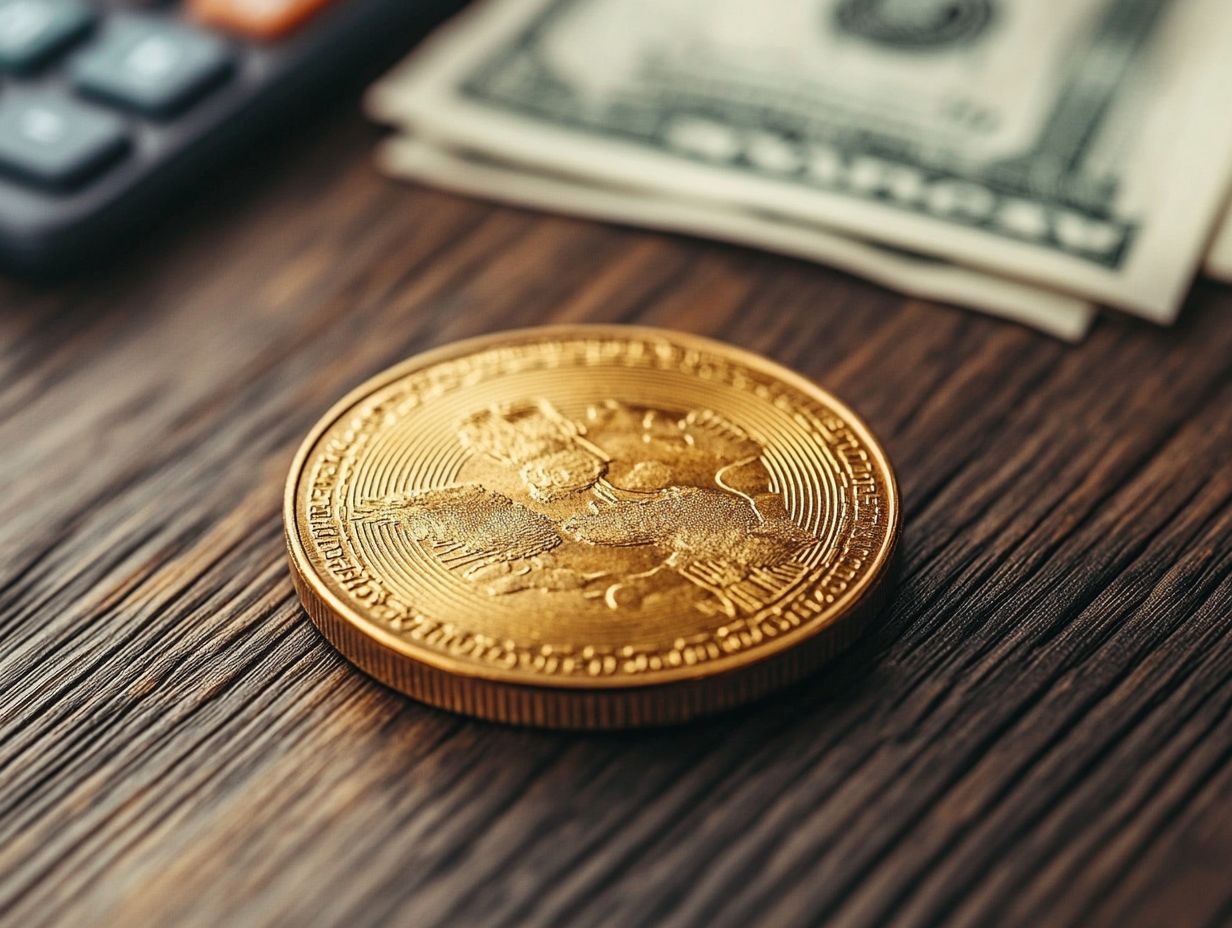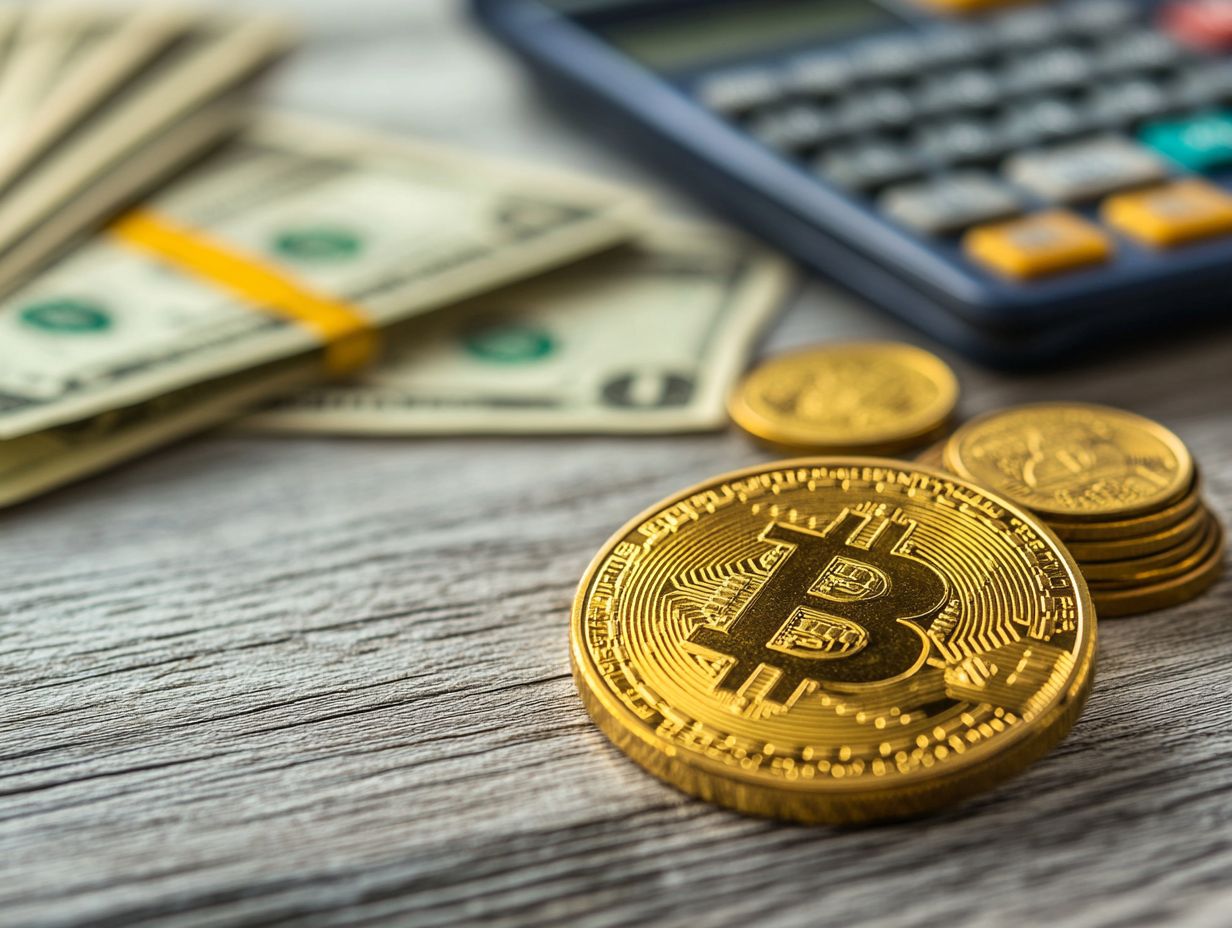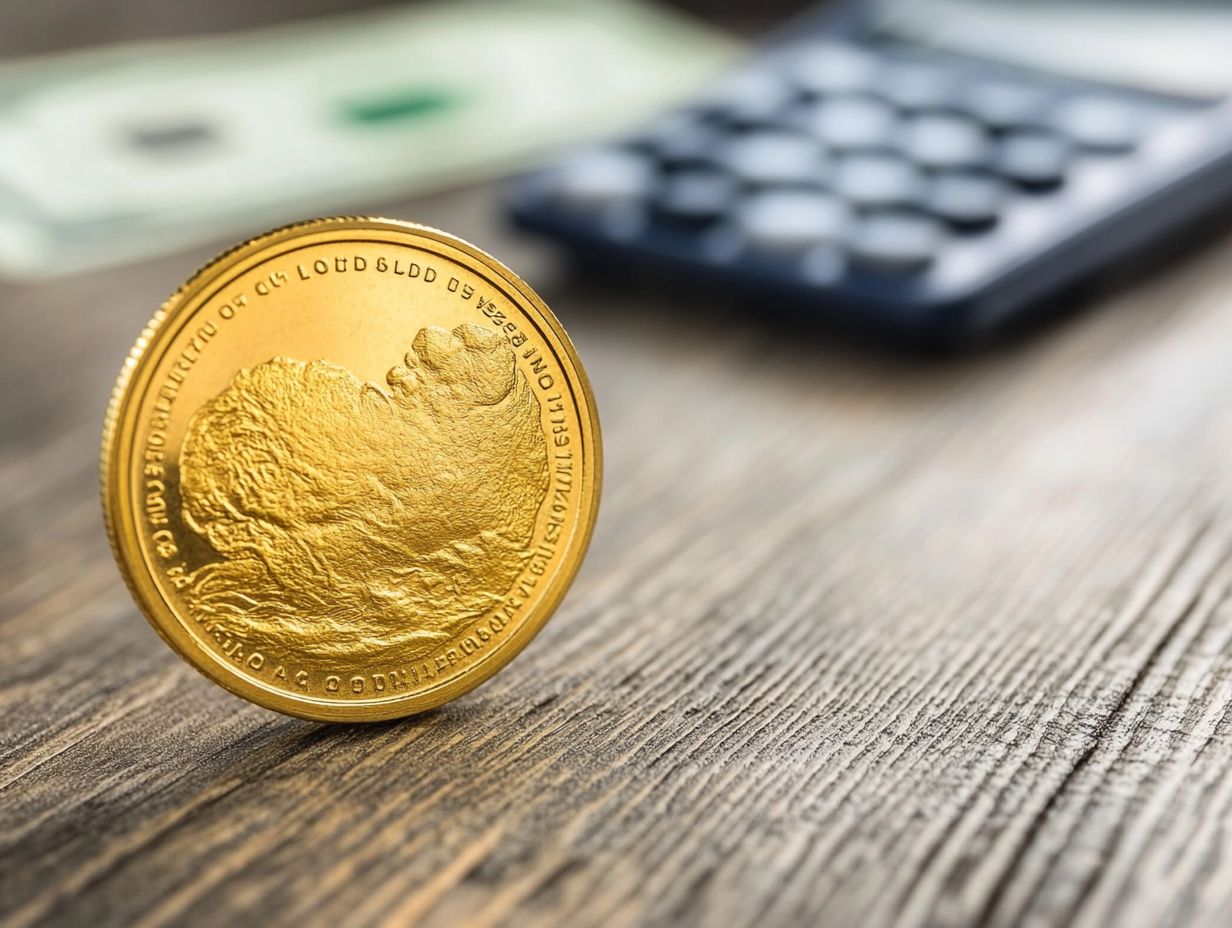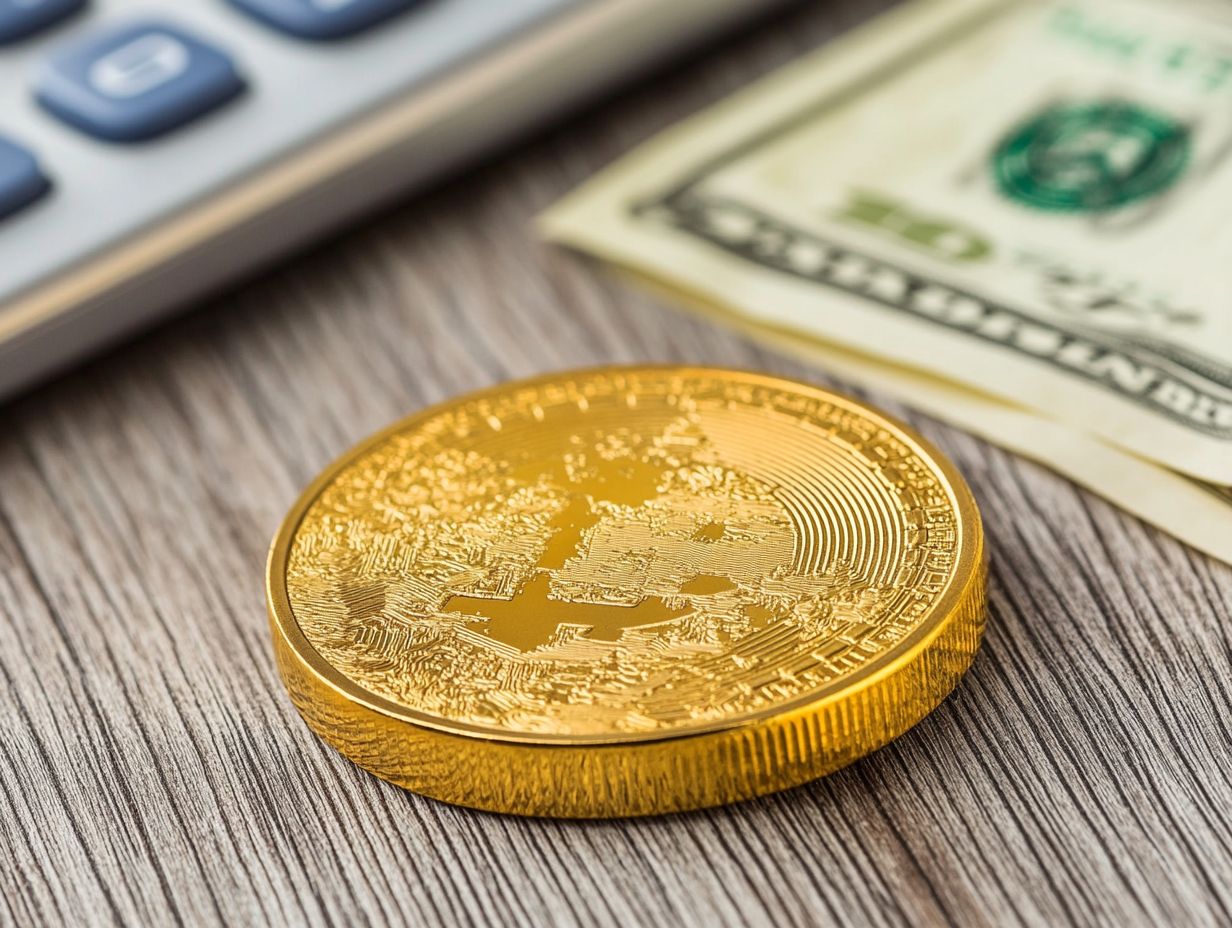What is the Minimum Investment for Gold?
Gold is renowned for its stability and growth potential, making it a favorite among investors. It offers a unique blend of security and opportunity.
But what does it truly mean to invest in gold? How much do you need to get started?
This article explores the essentials of gold investment, detailing the minimum amount required and the various options available. You ll discover the benefits of using gold as a hedge against inflation.
This article also addresses the risks involved and provides practical steps to begin your gold investment journey.
Whether you’re new to investing or looking to enhance your portfolio, this guide equips you with the knowledge to navigate the world of gold investments confidently.
Contents
- Key Takeaways:
- Understanding Gold Investment
- Minimum Investment for Gold
- Benefits of Investing in Gold
- Risks and Considerations for Gold Investment
- How to Get Started with Gold Investment
- Frequently Asked Questions
- What is the Minimum Investment for Gold?
- Can I invest in gold with a small amount of money?
- What is the best way to invest in gold with a small amount of money?
- Is it worth investing in gold with a small amount of money?
- Do I need a minimum amount of knowledge to invest in gold?
- Is there a minimum investment for gold in all countries?
Key Takeaways:

- Gold investment offers diversification and serves as a hedge against inflation.
- The minimum investment for gold varies based on factors like market volatility and storage costs.
- Options for investing in gold include exchange-traded funds (ETFs) and physical gold based on individual preferences and risk tolerance.
Understanding Gold Investment
Understanding gold investment is crucial for anyone looking to diversify their portfolio and protect their wealth during economic turmoil or inflation. Gold has long been a trusted store of value, especially in turbulent financial times.
You can invest in gold in several ways, including tangible assets like bullion and coins or investment products that include gold, such as ETFs and mutual funds. Given the continuous fluctuations in gold prices influenced by global trends, it s important to familiarize yourself with the available options to maximize your investment.
What is Gold Investment?
Gold investment involves purchasing and holding gold in various forms, whether it s physical gold, gold coins, or gold securities, with the goal of achieving long-term returns or hedging against inflation.
This multifaceted approach allows you to include tangible assets like gold bullion and coins, providing a comforting sense of security. You can also explore gold-backed financial products, such as ETFs or mutual funds, which give you exposure to gold without the hassles of storage and insurance.
Many individuals are attracted to gold due to its historical reputation as a safe haven during economic uncertainty. This aligns with strategies focused on diversification and risk management in a balanced portfolio. By investing in gold, you’re not just preserving your wealth; you’re also positioning yourself to capitalize on price movements in the gold market.
Minimum Investment for Gold
The minimum investment for gold can vary significantly based on your chosen method, whether it’s gold bullion, coins, or gold ETFs. Understanding these differences is crucial for making informed decisions in your investment journey.
Factors Affecting Minimum Investment

Several factors can impact the minimum investment required for gold, including fluctuating gold prices, market volatility, and broader economic conditions that influence investor sentiment.
As you navigate the unpredictable landscape of financial markets, the appeal of gold often increases, especially during economic uncertainty. Changes in global economic indicators, such as inflation rates and interest rate shifts, can lead to heightened volatility in gold prices, influencing the capital required for various gold products.
Geopolitical tensions or currency fluctuations can complicate your decision-making process. Therefore, considering these factors is vital, as they can significantly impact both your potential return on investment and the minimum amount needed to enter the market.
Explore Your Gold Investment Options
You have many options for investing in gold. These include physical gold, coins, bullion (gold bars), and modern financial instruments like gold ETFs (funds that trade like stocks but invest in gold) and mining stocks. Each option caters to different investment strategies.
If you appreciate the tangible value of gold, owning physical assets can provide a reassuring sense of security. However, it often comes with challenges like storage costs and liquidity issues.
Alternatively, you might prefer the convenience and flexibility of digital gold and securities like ETFs. This is especially true if you’re a tech-savvy investor who values low maintenance. Keep in mind that these options do carry additional risks tied to market volatility.
Your investor profile plays a crucial role in determining your preferences. Conservative investors may gravitate toward physical gold due to its intrinsic value, while those with a higher risk appetite might discover enticing opportunities in gold mining stocks, leveraging potential price appreciation. To understand more about the history of gold investment, consider exploring the various factors that have influenced this market over time.
Benefits of Investing in Gold
Investing in gold offers numerous advantages. It allows you to diversify your portfolio effectively and serves as a reliable hedge against inflation.
Gold delivers stable investment returns, especially during economic crises or downturns. Embracing this precious metal can enhance your financial security and resilience in uncertain times.
Diversification and Hedge Against Inflation
One of the primary benefits of investing in gold is its ability to diversify your portfolio while acting as a hedge against inflation. This is particularly important during turbulent economic times.
As market uncertainties emerge and inflation begins to erode the value of traditional currencies, savvy investors turn to gold as a dependable store of value. Historically, gold has preserved its purchasing power over extended periods, positioning itself as a stable asset during financial downturns. For instance, during the inflationary surge of the 1970s, gold prices soared, effectively shielding investors from the diminishing value of cash holdings.
By incorporating gold into your investment strategy, you can potentially reduce overall risk. This creates a balance between higher-volatility assets and something more stable and enduring that often appreciates when other assets waver.
Risks and Considerations for Gold Investment

While gold investment presents a multitude of advantages, it also comes with risks and considerations. You should be mindful of factors such as market volatility, storage costs, and potential economic disasters that could influence gold prices.
Market Volatility and Storage Costs
Market volatility and storage costs are crucial factors to consider when investing in gold, as they can significantly impact your overall investment returns.
The unpredictable nature of gold prices can present challenges. Price fluctuations may erode the value of your investment over time, leading to potential losses. Additionally, storing physical gold often incurs extra costs, such as insurance and secure storage facilities, which can squeeze your profit margins.
To mitigate these risks, consider diversifying your investments by incorporating gold ETFs or mutual funds. This provides exposure to gold without the hassle of physical storage. By staying informed about market trends and understanding key indicators for gold investment, you can navigate these fluctuations more effectively.
How to Get Started with Gold Investment
Embarking on a journey into gold investment requires a thorough understanding of the essential steps and resources at your disposal. This includes robust investment strategies and insights from seasoned financial analysts to guide your decisions.
Invest in gold today for a secure financial future!
Steps to Take and Resources to Use
To successfully navigate the realm of gold investment, you must follow key steps and leverage a variety of resources, including insights from financial analysts and established investment strategies.
Start by defining a clear investment timeline. This timeframe will help you ascertain how long you intend to hold your assets, shape your decisions, and mitigate risks tied to market fluctuations.
Next, consider which form of gold suits your objectives best whether it’s physical gold in the shape of coins or bars, gold ETFs, or mining stocks. Each option has its own set of advantages and drawbacks that you ll want to weigh carefully.
Engaging with a financial analyst can offer personalized advice tailored to your unique financial situation and goals, enabling you to make well-informed choices.
Utilize various resources such as reputable websites like Investopedia, insightful books on gold investing, and financial tools like portfolio trackers to enhance your understanding and refine your decision-making process.
Frequently Asked Questions

What is the Minimum Investment for Gold?
The minimum investment for gold varies depending on the type of investment you are interested in. For physical gold, the minimum can range from $1,000 to $10,000. For gold ETFs or stocks, the minimum can be as low as $50.
Can I invest in gold with a small amount of money?
Yes, you can invest in gold with a small amount of money through certain investment options such as gold ETFs or stocks. These options allow you to invest in smaller amounts, making them accessible for those with a limited budget.
What is the best way to invest in gold with a small amount of money?
The best way to invest in gold with a small amount of money is through gold ETFs or stocks. These options allow you to invest in smaller amounts without the additional costs associated with physical gold.
Is it worth investing in gold with a small amount of money?
Yes, it can be worth investing in gold with a small amount of money. While the returns may not be significant, it can still help diversify your portfolio and protect against market fluctuations.
Do I need a minimum amount of knowledge to invest in gold?
No, you do not need extensive knowledge to invest in gold. However, it is important to research and understand the risks and potential returns associated with different investment options.
Is there a minimum investment for gold in all countries?
No, the minimum investment for gold may vary from country to country. It is important to research the regulations and requirements in your specific location before investing in gold.
Don’t miss out on the chance to invest wisely in gold! Start your investment journey today!











